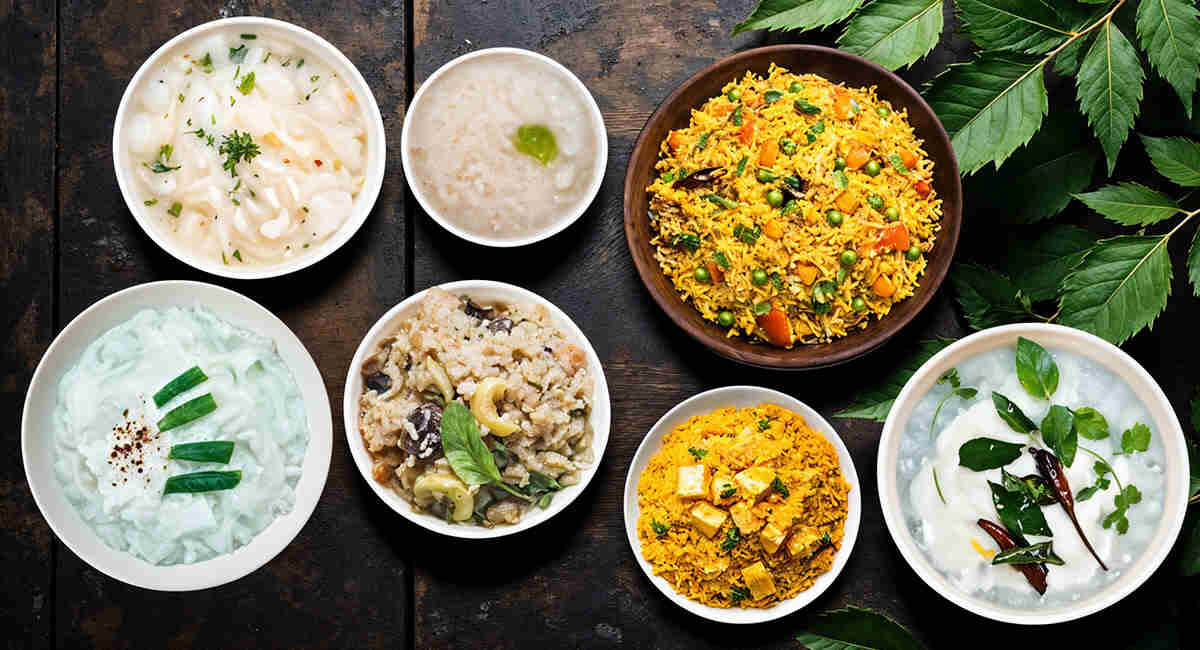Rice in Odia Cuisine: From Pilaf to Pakhala
Odisha, on the eastern coastal of India, boasts a culinary heritage deeply rooted in tradition, simplicity, and flavor. At the heart of Odia cuisine lies rice—not just a staple but a cultural emblem permeating every aspect of daily life, from festive feasts to humble meals. From the fragrant pilaf (locally known as pulao) served during celebrations to the cooling comfort of pakhala on a sweltering day, rice assumes a versatile and irreplaceable role in the Odia kitchen.
Historical and Cultural Importance of Rice
Rice cultivation in Odisha dates back thousands of years, and the state’s fertile river valleys, especially around the Mahanadi Delta, make it one of India’s prime rice-producing regions. Odisha grows over 60 rice varieties, with some indigenous strains unique to the region. Rice is not just an agricultural product in Odisha; it is a sacred grain tied to rituals, festivals, and the spiritual fabric of society.
During the festival of Nabanna, people offer freshly harvested rice to deities as a token of gratitude. Similarly, anna dana (providing rice to the needy) is considered one of the highest forms of charity in Odia culture.
Rice as a Daily Staple
For the average Odia household, rice is the centerpiece of lunch and dinner. A typical meal often includes bhakta (plain steamed rice), a dal (lentil soup), a seasonal vegetable curry, and a khata (a sweet-sour chutney-like dish). While the accompaniments may vary, rice remains constant—warm, fluffy, and generously served.
The importance of rice is such that the Odia term for food itself, bhojana, is often synonymous with bhaata. Its neutral flavor makes it the ideal foundation for the many acidic, spicy, and earthy side dishes that are a hallmark of Odia cuisine.
Pilaf: A Celebration of Fragrance and Flavor
One of Odisha’s more festive rice preparations is the pulao — a mildly spiced, aromatic rice dish typically prepared for celebrations, temple offerings, or as part of a wedding feast. Unlike its richer Mughlai cousin, Odia pulao is subtle in its use of spices. Cooks often enrich it with peas, carrots, raisins, and cashews after cooking it with basmati rice, ghee, bay leaves, cinnamon, cardamom, and cloves.
The temple city of Puri, home to the famous Jagannath Temple, offers an iconic pulao as part of the Mahaprasad (holy offering), known as Kanika. This version is sweetened with jaggery and laced with cardamom, reflecting the temple’s age-old culinary practices rooted in Ayurvedic principles.
Pakhala: The Soul Food of Odisha
If pulao is about celebration, pakhala is about comfort. This unique rice dish, served fermented or fresh, is arguably the most beloved dish in Odisha, especially during the unforgiving heat of summer.
Pakhala consists of cooked rice soaked in water (sometimes overnight) and served with curd, salt, and a splash of mustard oil or fried garlic. Accompaniments often include fried or mashed vegetables, dry fish, badi chura (spiced dried lentil dumplings), or saga bhaja (fried greens). Fermentation enhances its probiotic properties and imparts a tangy, refreshing, and satiating flavor.
Odisha celebrates Pakhala Dibasa (Pakhala Day) on March 20th every year to honor this traditional dish, showcasing its significance and pride in local food heritage.
Regional Rice Specialties
Across Odisha’s districts, rice manifests in different forms, tailored to local tastes and customs:
- Chhena Poda Pitha: A sweet rice cake made with rice flour and chhena (cottage cheese), traditionally baked over coals.
- Enduri Pitha: A steamed rice cake wrapped in turmeric leaves, often filled with jaggery and coconut—usually prepared during Prathamastami.
- Mudhi Mansa: While not a rice dish in itself, this unique combination of puffed rice (mudhi) and mutton curry highlights the inventive use of rice in Odia street food.
- Ghia Anna: Ghia Anna is rice cooked with ghee and served as an offering in temples, especially in the Chhapan Bhog of the Jagannath Temple.
Nutritional and Environmental Value
Rice in Odia cuisine isn’t just about taste — it aligns with the region’s climate and agrarian lifestyle. Easily digestible and cooling, rice is ideal for Odisha’s humid subtropical climate. Fermented rice in pakhala helps maintain gut health, aids digestion, and keeps the body hydrated.
From an environmental standpoint, traditional rice farming in Odisha uses organic and sustainable methods. Farmers across the region actively grow heritage varieties like Kalajeera and Saraswati because of their well-known medicinal and nutritional benefits.
Rice in Festive and Ritual Contexts
Rice is central to all major festivals in Odisha, such as Raja Parba, where women celebrate fertility and womanhood with rice-based delicacies. During Durga Puja and Makar Sankranti, people prepare and share sweets made from rice flour and jaggery, such as arisa pitha and Makara Chawla.
At weddings, people perform rituals such as Baja Homa by offering puffed rice into the sacred fire. Even in mourning ceremonies, rice plays a role—in the form of pinda daan, rice balls offered to ancestors.
Final Thoughts
From divine offerings to daily meals, festive delicacies to soul-soothing comfort food, rice is the beating heart of Odia cuisine. Whether it’s a fragrant bowl of pulao or a humble serving of pakhala, every grain tells a story of history, community, and an enduring connection between land and table. In Odisha, rice is more than just food. It is tradition, emotion, and identity, all rolled into one.


